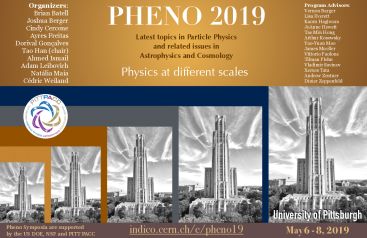Speaker
Description
The IceCube Neutrino Observatory detects high energy astrophysical neutrinos in two event topologies: tracks and cascades. Since the flavor composition of each event topology differs, tracks and cascades can be used to test the neutrino properties and the mechanisms behind the neutrino production in astrophysical sources. Assuming a conventional model for the neutrino production, the IceCube data sets related to the two channels are in >3σ tension with each other. Invisible neutrino decay with lifetime τ/m=100 s/eV solves this tension. Noticeably, it leads to an improvement over the standard non-decay scenario of more than 3σ while remaining consistent with all other multi-messenger observations. In addition, our invisible neutrino decay model predicts a reduction of 59% in the number of observed ντ events which is consistent with the current observational deficit.
